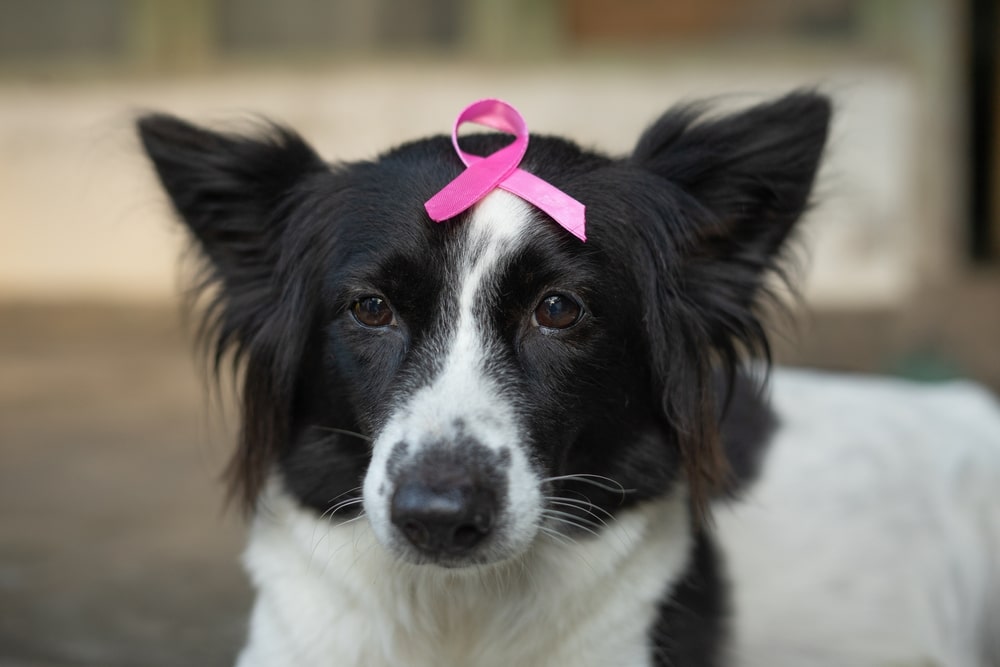Dogs are also not spared from this type of illness, and unfortunately, it is never easy learning your dog has cancer. Just like in humans, some tumors can be successfully treated, especially if they are diagnosed in time. But there is simply no cure for some cancers, and you can only do so much as an owner. Being a vet, it always breaks my heart when I have to deliver such information to the owners, but I am also glad that I can provide them with a few ideas on what to look for and how to take care of their dog best when it has cancer. So, how does someone take care of a dog with cancer?
Owners may think they can’t do much for their dog with cancer, but actually, they can do a lot. Recognizing pain, providing support, and just following the medication treatment protocol your vet provides is a good start to taking care of a dog with cancer.
Table of Contents
Let’s Learn About Tumors And Cancer In Dogs

It is not uncommon for owners to notice different lumps and bumps on their dogs’ bodies when they cuddle or give them scratches. Actually, this is something that vets encourage owners to do because this way, growths can be found in time, and they can be either followed up or treated by the vet. However, many times, dogs carry the scary stuff inside them, and usually, when they start showing any clinical signs, it can be a bit too late.
Whenever owners visit the vet, they get bombarded with so many foreign words. Please forgive us as we just forget that not everyone knows the terms. So, do ask us what you don’t understand! So, for cases like this, I will try to explain to you the most common terms used in oncology (the study of cancer) patients.
Cancer
Yes, this is the scary thing, and vets use it when they are referring to a growth that has metastasized in the surrounding tissue or other organs.
Neoplasia
This is a term that vets use to describe a formation that grows uncontrollably.
Tumor
This is a term used to describe the actual physical manifestation of cancer or neoplasia.
Benign
This is a term that describes tumors that are not spreading in the surrounding tissue or sending cells to other organs to metastasize. But they need to be treated and removed as soon as possible. Vets also call them “good” tumors because they are easily treated.
Malignant
This is also known as cancer. This is something that no owner or vet wants to hear. This type of formation grows fast, spreads in the surrounding tissue, and can metastasize in other organs.
What Can I Do For My Dog With Cancer?
For starters, follow the guidance of your vet, give the medication on time, and don’t skip a veterinary visit. Here are some other tips that you need to consider.
Learn How To Recognize Your Dog Is In Pain
No one likes the feeling of pain. The same goes for our dogs. Talk to your vet about what could indicate something is not right because you know your dog, and you are the best at reading the signs when something is off. If you notice your dog refusing to eat or having difficulty breathing, for example, those are signs pointing towards pain. Also, ask your vet about painkillers to take at home and when to give them.
Activity Is Needed, But Don’t Push Your Dog
Every dog needs to move its limbs, even when they are sick. Even a dog with bone cancer needs to walk for even five minutes and move around the other joints and stretch the muscles. Be mindful about how much, though, how long, and what your dog can handle. If you are not sure, talk to your vet or ask for them to recommend a physiotherapy consultation where you can learn about this.
Pay Attention To Your Dog
Even though dogs can’t talk, they are really good at showing us what they want or what they need. Sometimes when the time is right, they do their very best to show you that they are ready to move on and it is time to let go. As a vet, I say that they are privileged in the way that they don’t need to continue the suffering and pain and that owners should be brave enough, rather than selfish, and let go. It is never an easy decision, not for us as professionals, nor for the owners either.
If you’re unsure about making the decision, always talk to a vet to get some perspective.
Conclusion: How To Take Care Of A Dog With Cancer
Taking care of a dog with cancer will be hard and time-consuming. But as an owner, you know that owning a dog is not only about the good days. Vets are here to help guide you and your dog and present you with all the options they think will help. We never give up, either. Even when we suggest euthanasia, it’s only because we care about our patients’ well-being and quality of life.
As a side note, it was not easy writing this article. I’m dedicating it to my girl, Pepa, who I lost to cancer last year. I love you, Pepa.
